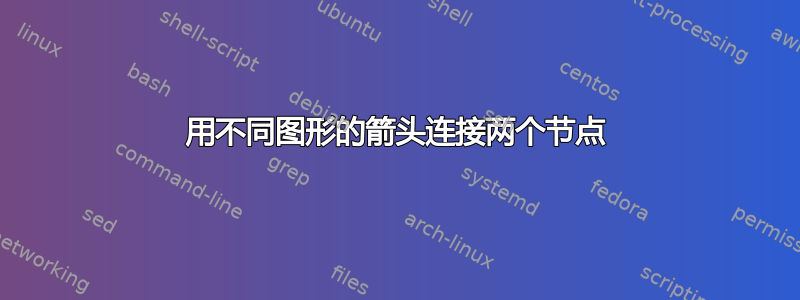
我正在尝试连接来自两个不同图形的两个节点;有解决方案吗?这是我的尝试。
\documentclass [conference]
\usetikzlibrary{tikzmark, shadows.blur,arrows.meta,bending, shadings, intersections, calc, decorations.text,shapes,backgrounds, shapes.geometric, positioning, fit}
\usepackage{tikz, pgfplots}
\begin{figure*}[h!]
\begin{tikzpicture}
[auto,
decision/.style={diamond, draw=blue, thick, fill=blue!20,
text width=4.5em,align=flush center,
inner sep=1pt},
block/.style ={rectangle, draw=blue, thick, fill=blue!20,
text width=6em,align=center, rounded corners,
minimum height=4em},
line/.style ={draw, thick, -latex,shorten >=2pt},
cloud/.style ={draw, cylinder, shape border rotate=90, aspect=0.4, %
minimum height=40, minimum width=50, cylinder body fill = gray!10,
cylinder end fill = gray!40}]
\matrix [column sep=4mm,row sep=7mm]
{
% row 1
\node [cloud] (raw) {Raw Data}; &
\node [block, fill=green!20] (prep) {Data Preprocessing}; &
\node [block] (feature) {Feature Engineering}; &
\node [block] (select) {Model Selection}; &
% row 2
\node [block] (train) {Model Training};& \\ &&&
\node [block ] (evaluate) {Model Evaluation};
\node [decision] (decide) [below = of select] {Is best candidate?}; \node [block, left] (stop) [left = of decide] {Model Deployment};\\
};
\begin{scope}[every path/.style=line]
\path (raw) -- (prep);
\path (prep) -- (feature);
\path (feature) -- (select);
\path (select) -- (train);
\path (train.south) |- +(0,-40pt) --(evaluate.east);
\path (evaluate) -- (decide);
\path (decide) -- node [above] {Yes} (stop);
\path [dashed] (decide.south) -- +(0,-10pt) -| node [pos=0.62, right] {No} (feature);
\end{scope}
\end{tikzpicture}
\caption{Machine Learning Pipeline}
\label{}
\end{figure*}[h!]
\begin{figure}[h!]
\begin{tikzpicture}
% cyclic flowchart
% https://tex.stackexchange.com/questions/477310/cyclic-flowchart-in-tikz
\node[draw, cylinder, shape border rotate=90, aspect=0.4, %
minimum height=40, minimum width=50, cylinder body fill = gray!10,
cylinder end fill = gray!40] (data) at (0,0) {Raw Data} ;
\path[name path=circle] (0,0) circle[radius=3.2 cm];
\foreach \Angle/\Color/\Label/\Text in
{90//DC/{Data \\ Cleaning},%
180//DI/{Data \\ Integration},%
270//DR/{Data \\ Reduction},%
360//DT/{Data \\ Transform- \\ ation}}
{
\node[draw=blue, rectangle, align=center, fill=blue!20, rounded corners, name path=\Label, align=center, text=black] (\Label) at (\Angle:3cm) {\Text};
% \node[draw, circle, name path=\Label, color=black, minimum width=1.5cm, align=center, text=black] (\Label) at (\Angle:3cm) {\Text};
\path[name intersections={of=circle and \Label,by={\Label-1,\Label-2}}];
\draw[{Latex}-] (\Label) -- (data);
}
\node[rectangle,draw=green, fit=(DC) (DR), minimum height=8cm, minimum width=8cm](fit) {};
\draw[{Latex}-{Latex}]
let \p1=(DI-1),\p2=(DC-2),\n1={atan2(\y1,\x1)},\n2={atan2(\y2,\x2)}
in (DC-2) arc(\n2:\n1:3.1cm);
\draw[{Latex}-{Latex}]
let \p1=(DR-1),\p2=(DI-2),\n1={atan2(\y1,\x1)},\n2={atan2(\y2,\x2)}
in (DI-2) arc(\n2:\n1:3.1cm);
\draw[{Latex}-{Latex}]
let \p1=(DC-1),\p2=(DT-1),\n1={atan2(\y1,\x1)},\n2={atan2(\y2,\x2)}
in (DT-1) arc(\n2:\n1:3.1cm);
\draw[{Latex}-{Latex}]
let \p1=(DT-2),\p2=(DR-2),\n1={atan2(\y1,\x1)},\n2={atan2(\y2,\x2)}
in (DR-2) arc(\n2:\n1:3.1cm);
\end{tikzpicture}
\caption{Data Preprocessing Tasks}
\label{}
\end{figure}
\end{document}



